
Kate McCullough
BA (Ayurveda Wellness and Integrative Health)
In Ayurvedic medicine every person is unique. That is why the three doshas
- Vata
- Pitta
- Kapha
create a distinct ratio within an individual’s physiology and psychology, giving them a unique mind-body type.
In this article we are going to talk in detail about Vata dosha, which is composed of the space and air elements.
Space and air are light, dry, moving, cold and rough, so common characteristics related to Vata are reflections of these qualities such as
- Small or thin body frame
- Dry skin
- Cold hands and feet
- Quick and creative minds (prone to becoming anxious and overwhelmed)
Understanding the Vata dosha and keeping it well balanced can help individuals stay healthy and free of diseases. Let’s see how we can do that.
What are the doshas?
In Ayurveda there are three doshas or bodily humors known as Vata, Pitta and Kapha. These doshas are made up of a combination of the 5 elements
- Space
- Air
- Fire
- Water
- Earth
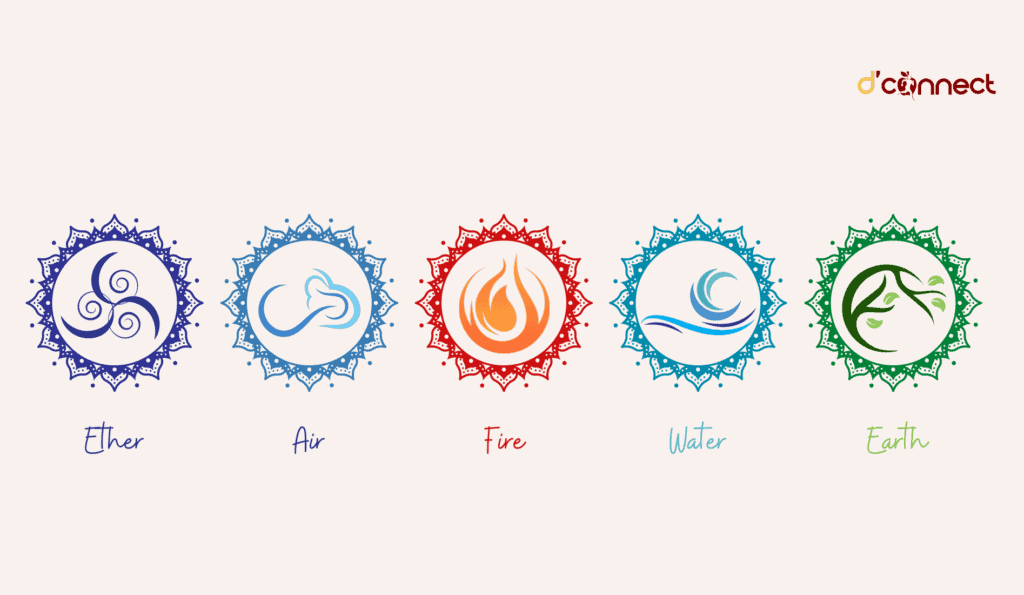
Vata is composed of air and space, Pitta is composed of water and fire, while water and earth create Kapha.
Three doshas make up everything in our universe
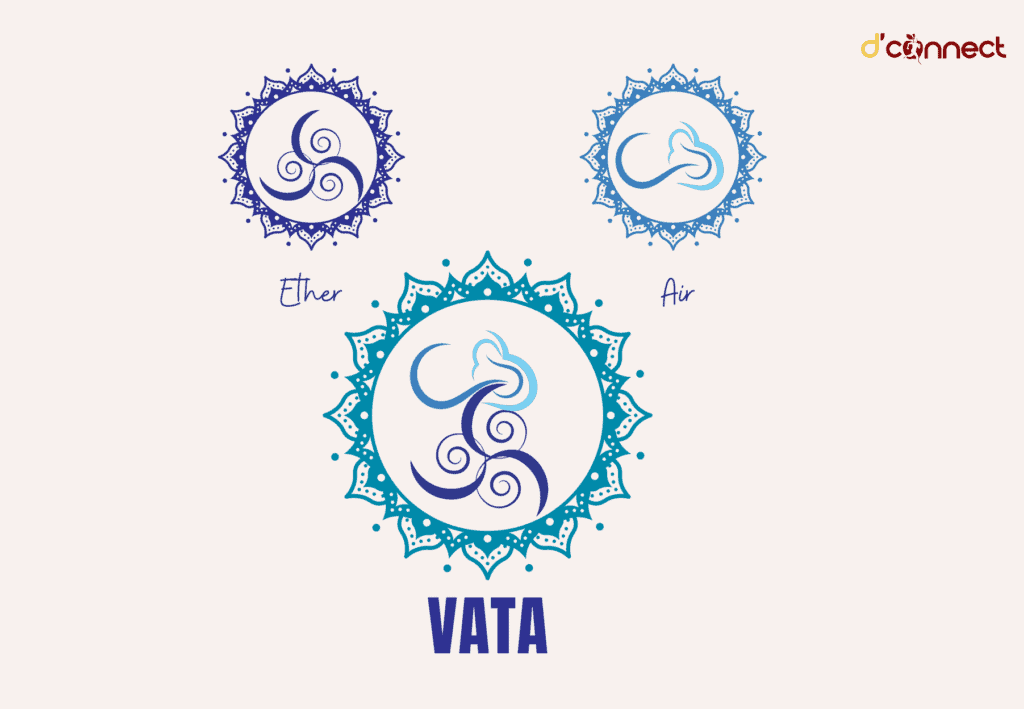
For example, the wind is made up of all three doshas, but is predominately made up of Vata, the sun is predominantly Pitta and mud is predominately Kapha.
Just like we want the right balance of these doshas in our environment to keep everything functioning optimally, we also want the right balance of the doshas in our physiology to keep our bodies healthy and in balance.
We are all born with our own unique composition of all three doshas, giving us a unique mind-body type. This mind-body type helps explain a person’s
- Nature
- Personality
- Physical characteristics
- Diseases they are more prone to when out of balance.
Vata’s function in the body
Vata is present everywhere, and it is most easily understood by comparing it to the wind. Vata (wind) is responsible for things such as spreading seeds for germination, kindling fire, providing breathing air, rainfall, and flowing of rivers.
In the body, Vata’s functions are mostly found in the srotas (channels) where it is responsible for all movement, transportation and communication.
Vata regulates all activity in the mind and body
Vata is the fundamental dosha that governs normal sensory and motor functions for survival and maintenance of health.[1]
All movement of our limbs, breathing, movement of fluids and air within our body, burping, flatulence, waste elimination and menstrual flows are all governed by Vata.
Vata even controls the movement of the other two doshas in the body, Pitta and Kapha, therefore it is important that Vata is in balance to keep the other doshas in balance as well.[2]
Qualities of Vata
All three doshas are composed of certain qualities related to their elements. Vata’s elements are air and space, so its qualities describe these two elements by being
- Light
- Dry
- Rough
- Cold
- Moving
- Subtle
- Quick
Due to Vata’s light and airy qualities it is easily influenced and moved out of balance, especially during the colder seasons when there is an increase of Vata qualities in our environment.
Characteristics of Vata
Vata mind-body types are seen to be more delicate and fragile due to its qualities. Vata bodies tend to be smaller and slimmer, and their minds quicker and more active.

Other characteristics of Vata types are
- Light, thinner build
- Creative
- Quick thinker
- Aversion to cold weather
- Irregularity in hunger and thirst
- Performs activity quickly
- Quick to grasp new information, also quick to forget
- Tendency for dry skin, worry, constipation
- Tendency for light, interrupted sleep[3]
Understanding our unique mind-body types and its characteristics, can help us understand our unique body shapes, mind tendencies and what symptoms we are more prone to.
Signs of a balanced Vata
All doshas have their strengths when they are balanced. Vata’s strengths, apart from enthusiasm, creativity and bringing joy to others, are being
- Happy
- Enthusiastic
- Creative
- Clear-minded
- Good sleep
- Balanced inhalation & exhalation (no shortness of breath)
- Balanced movement
- Balanced development of dhatus (Tissues)
- Balanced elimination
Each dosha’s unique qualities of being in balance are what allows us to have diversity and co-operation in our society.
Vatas are creative and have wild energy
Signs of an imbalanced Vata
For someone that has a Vata mind-body, or Vata combination mind-body type, they are more prone to experiencing a Vata imbalance. This imbalance might manifest as
- Mental fatigue
- Shortness of breath
- Dry skin, lips, hair
- Feeling ungrounded
- Insomnia, or light interrupted sleep
- Constipation, bloating, excess flatulence
- Excess worry, anxiety, and fear
- Joint pain, lower back pain, sciatica
- Talking excessively, or nervously
- Underweight, struggles to gain weight
- Poor circulation (cold hands and feet)[4]
Understanding the symptoms of a Vata imbalance allows us to heal from the root cause.
RELATED — Ayurvedic Medicine and Commonly Treated Health Conditions

Normally, a Vata imbalance will manifest with many symptoms, and instead of having to treat them all individually, we can focus on balancing Vata through diet and lifestyle, to treat all the symptoms at once.
Causes of Vata imbalances
In Ayurveda, a dosha imbalance is caused by the notion of “like increases like” (Samanya), therefore the more Vata qualities in our life, the higher the chances are of experiencing a Vata imbalance.[5]
RELATED — Introduction to Ayurveda: Ancient medicinal healing methods
For instance, Vata has cold and rough qualities so taking in large amounts of cold, raw and rough foods will increase Vata, or being exposed to cold dry winds in winter can also increase Vata.
The most common factors that cause a Vata imbalance are
- Cold, dry, rough, and raw foods/drinks (ice-cream, salads, raw vegetables, rice crackers, cold drinks)
- Exposure to cold/windy weather
- Excessive movement (intense exercising)
- Irregular sleep routines
- Irregular meal times
- Skipping meals
- Constant stress
- Always on the go, rushing
The more Vata qualities in one’s life, the higher the chance of experiencing an imbalance
How to balance Vata
While food plays a big role in balancing our doshas, to gain true balance it requires consideration of the person’s lifestyle and daily habits.
The easiest way to balance Vata is to increase more foods and activities that have opposite qualities of Vata, such as warm, moist, oily, slow, smooth, stable.
When balancing Vata we want to focus on these four words
- Routine
- Warmth
- Serenity
- Nourishment[4]
Foods to consume

Foods that are naturally sweet, salty and sour, such as
- Warm herbal teas (ginger, licorice)
- Oats, rice, wheat, semolina, quinoa
- Red lentils, moong dal, tofu
- Organic dairy, especially milk and ghee
- Sesame oil and olive oil
- Bananas, mangoes, dates, berries, stone fruits
- Kumara, potato, beets, asparagus, leeks, pumpkin
- All nuts and seeds (soaked first)
- Cinnamon, ginger, black pepper, cardamon, garlic
- Chicken, eggs, fish, turkey, beef (if not vegetarian)[6]
Foods to avoid and reduce
Foods that should be avoided in case of a Vata imbalance, are foods that are naturally astringent, bitter and pungent.
- Cold drinks, coffee, alcohol, soda
- Buckwheat, couscous, muesli, rice cakes
- Chickpeas, black beans, kidney beans
- Apples, pears, persimmon, cranberries, watermelon
- Raw greens, cruciferous vegetables, corn, eggplant
- Artificial sweeteners, white sugar
- Cayenne, chili powder, fenugreek
- Lamb, pork[6]
Lifestyle complementing balanced Vata
While diet is generally the easiest and the quickest way to balance Vata in our body, our lifestyles also play an important role. Following some simple Vata pacifying lifestyles can be game changing for Vata individuals.
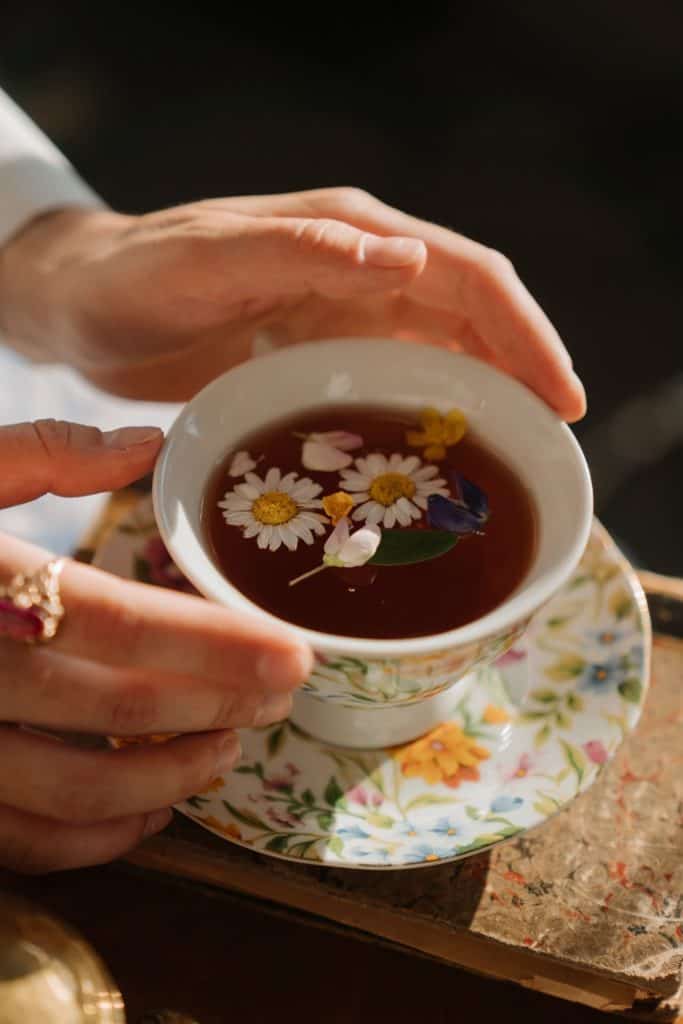
- Eating warm, moist, regular meals, cooked in spices to aid in digestion
- Sipping warm water, herbal teas during the day (especially during winter)
- Keeping warm
- Having a regular routine
- Taking time to slow down
- Favor soothing, calm music
- Meditation
- Self-massage (abhyanga) with sesame oil can balance Vata and rehydrate the skin[1]
Exercise and Vata
Working out between 6-10am and doing slow, gentle and strengthening exercises are best for Vata.[7]
Some of these exercise are
- Yoga
- Tai-chi
- Walking in nature
- Piliates
- Gentle Cycling[7]
Herbs that help to balance Vata
Ashwagandha is a rejuvenating herb that helps to calm and strengthen the nervous system and is commonly used for anxiety, depression, fatigue, and poor immunity.[8]
Triphala supports healthy elimination by gently detoxifying and strengthening the colon, which can help reduce bloating, flatulence and constipation.[4]
Shatavari is an amazing general tonic and more specifically a reproductive tonic for women. Some of its many properties are that it is
- Antioxidant
- Anti-stress / anti-depressant
- Anti-inflammatory[9]
Summary
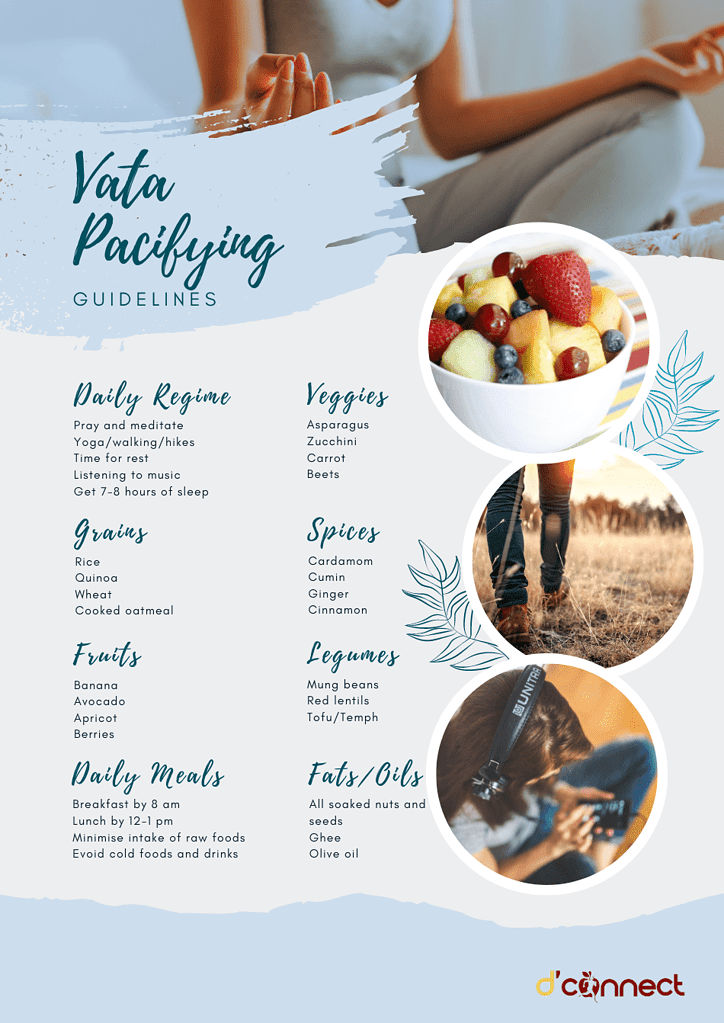
Key Takeaway – feel free to share this illustration with friends and family, especially if you think that it might benefit them to get more in balance with their daily routine and lifestyle.
Related Questions
1. What are the 5 subdoshas of Vata?
Prana Vata
From head to heart – it is responsible for our life force, breathing, intellect, swallowing, sense organs and state of consciousness.
Udana Vata
From navel to nose – it is responsible for upwards movement such as energy, speech, and intellect.[1]
Samana Vata
In the stomach – it is responsible for digestive functions as it fans the fire in the stomach for optimal digestion.[1]
Apana Vata
From navel to thigh – it is responsible for downward movement of natural urges like elimination, menstrual blood and sexual urges.[1]
Vyana Vata
Main seat is in the heart, but also functions all over the body, and is responsible for circulation and voluntary movement.[1]
2. How can I find out if I have a Vata mind-body type?
To get the best and most accurate information, I would suggest seeing an Ayurvedic practitioner/doctor for a consultation.
3. Do seasons impact the doshas?
Yes! Autumn and winter are the main seasons of Vata, since the cold, dry and windy weather match the qualities of Vata. Also, it is more likely for someone to get a Vata imbalance during this time.
4. Is Vata related to the vagus nerve?
While there is yet not enough research done for a definitive answer, Vata’s functions and signs of imbalance are very closely related to the function of the vagus nerve.
5. Are all cases of insomnia caused by a Vata imbalance?
Most cases of insomnia would be characterized by a Vata or Pitta imbalance, since they can both cause an active, busy, and unsettled mind.[10]
RELATED — Pitta imbalance: Are you easily irritated and prone to skin rashes or heartburn?
Kate is currently studying for a Bachelors in Ayurveda from the Maharishi International University. Her passion for holistic and alternative health modalities started when she was 18 and already experiencing an array of health issues that the doctors had no answers for. This led Kate down the path of studying the ancient knowledge of Ayurveda to regain her health and vitality again.
Kate’s focus is on gut and mental health, sleep, and exercise where through pulse readings, diet, daily routines, seasonal cleansings, yoga, and meditation we can create a balance.
References
(1) Sumantran, V. N., & Nair, P. P. (2019, May 25). Can the vagus nerve serve as biomarker for vata dosha activity? NCBI. Retrieved July 2, 2022, from https://www.ncbi.nlm.nih.gov/pmc/articles/PMC6599167/
(2) Easy Ayurveda. (2014, September 24). Understand Vata Dosha By Its Functions. Easy Ayurveda. Retrieved June 23, 2022, from https://www.easyayurveda.com/2014/09/24/understand-vata-dosha-by-its-function/
(3) Wallace, R. K., & Travis, F. T. (2015). Dosha brain-types: A neural model of individual differences. NCBI. Retrieved July 2, 2022, from https://www.ncbi.nlm.nih.gov/pmc/articles/PMC4719489/
(4) Banyan Botanicals. (2021). Vata Dosha Balancing – Ayurveda. Banyan Botanicals. Retrieved July 2, 2022, from https://www.banyanbotanicals.com/info/ayurvedic-living/learning-ayurveda/balancing-vata/
(5) Herman, E. (2020, November 27). Calming a Vata Imbalance: You Can Heal Body and Mind with These 8 Tips. Artofliving.org. Retrieved July 2, 2022, from https://www.artofliving.org/us-en/how-to-balance-vata-dosha-9-tips-for-balancing-your-body-and-mind
(6) Banyan Botanicals. (2022). Ayurveda Vata Foods – Balancing Vata Dosha. Banyan Botanicals. Retrieved July 2, 2022, from https://www.banyanbotanicals.com/info/ayurvedic-living/living-ayurveda/diet/vata-pacifying-foods/
(7) Mischke, M. (2021). A Vata-Balancing Approach to Fitness. Banyan Botanicals. Retrieved July 20, 2022, from https://www.banyanbotanicals.com/info/ayurvedic-living/living-ayurveda/health-guides/the-ayurvedic-approach-to-fitness/a-vata-pacifying-approach-to-fitness/
(8) The editors at Chorpa.com. (2014, December 12). Calming Herbs To Balance & Pacify Your Vata Dosha.
(9) Alok, S., Jain, S. K., Verma, A., Kumar, M., Mahor, A., & Sabharwal, M. (2013). Plant profile, phytochemistry and pharmacology of Asparagus racemosus (Shatavari): A review. Asian Pacific Journal of Tropical Disease, 3(3), 242–251. https://www.ncbi.nlm.nih.gov/pmc/articles/PMC6599167/
(10) Mischke, M. (2021). Balancing Insufficient Sleep. Banyan Botanicals. Retrieved July 2, 2022, from https://www.banyanbotanicals.com/info/ayurvedic-living/living-ayurveda/health-guides/an-ayurvedic-guide-to-balanced-sleep/balancing-insufficient-sleep/


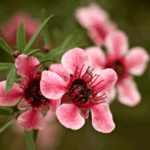

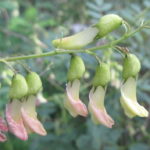

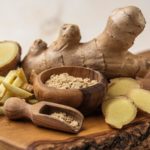
Thank you so so so much. This is life changing information for me. I am so grateful. Thank you!